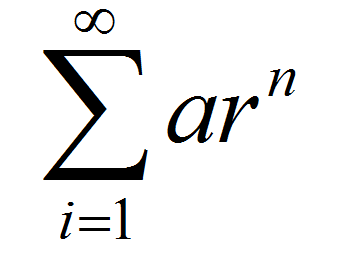Axis of Symmetry
Instructions: Use this calculator to find the axis of symmetry of a parabola, showing all the steps. Please provide a valid quadratic function in the form box below.
Axis of Symmetry Equation
This calculator will allow you to find the axis of symmetry equation for a given quadratic function, showing all the steps of the process.
You need to provide a valid expression quadratic function. For example, a valid quadratic function is something like 2x² - 5x + 1, but you can also provide a quadratic function that is not fully simplified like 2x² + 5x +3/4 x - x² , as the calculator will conduct any necessary quadratic simplification.
Once you provide a valid quadratic function, you need to click the "Calculate" button, and the solutions with all the steps will be provided.
The axis of symmetry has a strong geometric meaning, and it is the axis that serves as a "mirror" for the graph of a quadratic function, which is a parabola, and it is tightly linked to the roots of the quadratic function.

Axis of symmetry formula
The graph of a quadratic function ax² +b x + c is a parabola, and this parabola will be symmetric around its axis of symmetry. The axis of symmetry equation is:
\[x = \displaystyle -\frac{b}{2a} \]What are the steps for finding the axis of symmetry equation?
- Step 1: Identify the quadratic function and simplify it into its form ax² +b x + c
- Step 2: Once you have the quadratic function simplified, make sure that a ≠ 0, otherwise you cannot continue
- Step 3: The axis of symmetry equation is \(x = \displaystyle -\frac{b}{2a} \)
- Step 4: This means that the axis of symmetry is a vertical line, that passes through the point \(\left(\displaystyle -\frac{b}{2a}, 0\right) \)
Observe that this is the case for regular parabolas, without any axes rotation, which goes beyond the scope of this tutorial.
Axis of symmetry calculator
This parabola calculator will receive the quadratic function provided, it will simplify it into its ax² +b x + c form, and it will plug the values a and b into the formula:
\[x = \displaystyle -\frac{b}{2a} \]But there are also other ways of finding the axis of symmetry of a parabola. Suppose that you solve the quadratic equation ax² +b x + c = 0, and you find the roots u and v. How do you find the axis of symmetry when you know the roots of the quadratic equation?
- Step 1: Identify the given roots of the quadratic equations
- Step 2: You will have two roots u and v. If there is only one root, you define u and v as the same value
- Step 3: The axis of symmetry is found by computing the midpoint of the roots u and v: This is, we have the axis of symmetry formula \(x = \displaystyle \frac{u+v}{2}\). This works for either real or complex roots
When you have complex roots, they will be conjugate complex numbers, so then the average of them will yield a real number.
Why would care about the axis of symmetry?
The axis of symmetry corresponds to the symmetric line for the graph of quadratic function, which is a parabola. So, having a reference for the symmetry gives a lot of information about the parabola.
For example, the roots of the equation will be disposed symmetrically with respect to this axis of symmetry.

Example: Axis of symmetry
Consider the following quadratic equation: \(f(x) = 3x^2 + 2x + 1\). Find its axis of symmetry.
Solution:
which concludes the calculation.
Example: Axis of Symmetry Equation
Assume you have the following quadratic expression: \(f(x) = x^2 + \frac{2}{3}x + \frac{5}{4}\). Use the formula to compute its axis of symmetry.
Solution:
which concludes the calculation.
Example: Axis of symmetry formula from the roots
Assume that the roots of a quadratic equation are \(r_1 = 3\) and \(r_2 = 5\). Find the axis of symmetry equation of the parabola.
Solution: We know that when the roots are provided, we need to average the roots. Hence, the axis of symmetry equation of the parabola is
\[x = \displaystyle \frac{u+v}{2} = \displaystyle \frac{3+5}{2} = 4\]which concludes the calculation.
More quadratic calculators
Finding the axis of symmetry of a parabola is just one many things you can do with quadratic functions. You can solve quadratic equations and compute the vertex.
Also, and as you probably have noticed, there is a strong link between the vertex formula and the axis of symmetry: Indeed, the axis of symmetry is a vertical line that passes through the vertex.





